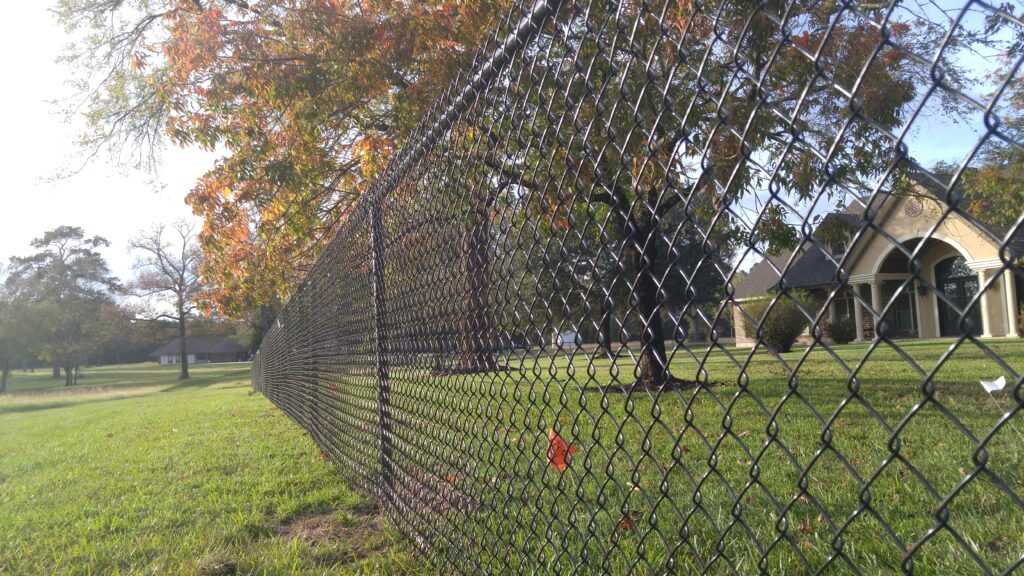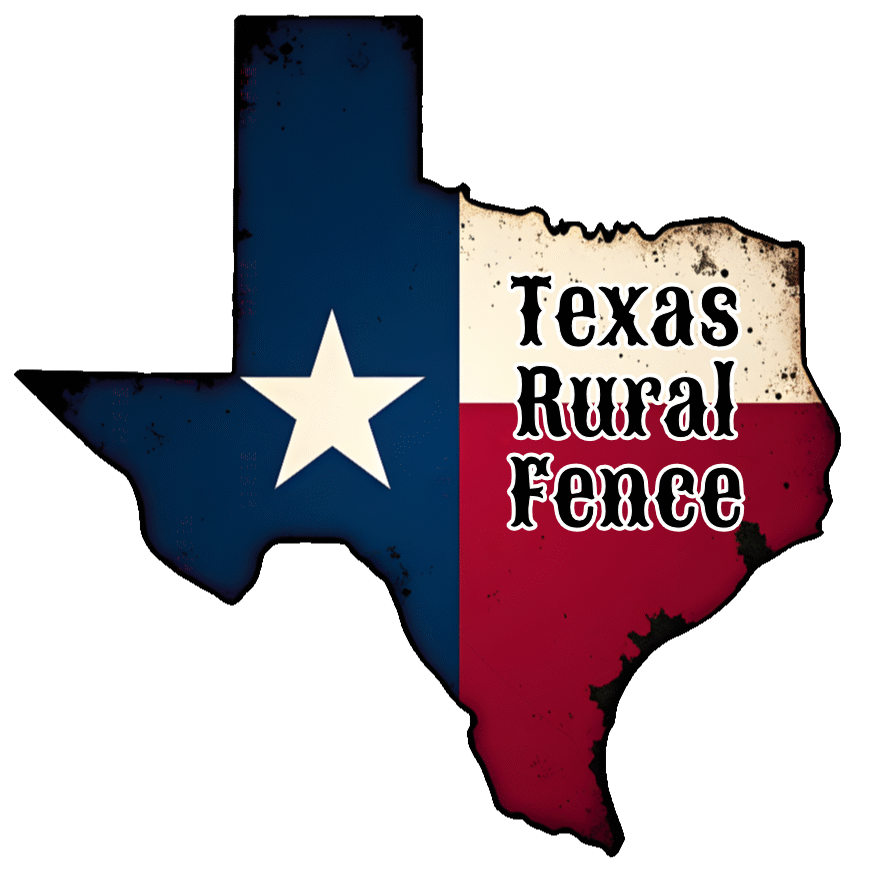A Brief History of Chain Link Fences in Texas
Chain link fencing became popular in Texas in the mid-20th century due to its affordability, durability, and versatility. Originally invented in the mid-1800s in the United Kingdom, chain link fencing gained traction in the United States during the early 1900s as urban areas expanded and industrial needs grew.
Introduction to Texas
As Texas cities like Houston, Dallas, and San Antonio experienced rapid industrialization and population growth, chain link fencing provided an effective solution for securing properties, schools, and industrial sites. By the 1950s, it was widely adopted for both residential and commercial applications across the state.
Why It Became Popular in Texas
- Durability Against Harsh Weather: Chain link fences withstand Texas’s extreme weather conditions, from high winds and scorching heat to heavy rains.
- Cost-Effectiveness: With Texas’s vast properties, chain link fencing offered an economical way to secure large areas.
- Versatility: The fence’s design made it suitable for various uses, from securing livestock enclosures and backyards to protecting businesses and public spaces.
Modern Uses
Today, chain link fences are a staple in Texas, used for:
- Residential Boundaries: Affordable fencing for yards and driveways.
- Commercial Security: Securing warehouses, parking lots, and construction sites.
- Public Spaces: Schools, parks, and sports fields.
- Industrial Applications: Oilfields, factories, and power stations.
Chain link fencing remains a reliable, practical choice for Texans, reflecting its history of adapting to the state’s evolving needs.

How a Typical Chain Link Fence Is Built in the Lake Livingston Area
Building a chain link fence in Lake Livingston, Onalaska, and nearby Texas communities involves a specific process tailored to the region’s landscape, climate, and residential needs. Whether for securing property, pets, or simply marking boundaries, chain link fences provide durability and low maintenance for local homeowners.
Here’s how a typical chain link fence is constructed in this area:
1. Planning and Preparation
- Determine Fence Line:
- Mark property boundaries using stakes and string.
- Account for slopes, tree lines, and potential obstructions common in the Lake Livingston area.
- Obtain Permits:
- Ensure compliance with local building codes and homeowner association regulations, if applicable.
- Materials and Tools:
- Chain link mesh (galvanized or coated for corrosion resistance).
- Line posts, corner posts, and terminal posts.
- Concrete, tension bars, caps, and tie wires.
- Tools: Post hole digger, pliers, level, and tensioning tools.
2. Setting the Fence Posts
- Post Placement:
- Measure and space line posts 8–10 feet apart along the marked fence line.
- Identify terminal post locations (corners, gates, or ends of the fence).
- Dig Post Holes:
- Dig holes 2–3 feet deep for stability, adjusting for Lake Livingston’s sandy or clay soil.
- Install Posts:
- Set terminal and line posts in the holes, ensuring they are plumb and at the correct height.
- Fill holes with concrete for durability against shifting ground and Texas winds.
- Allow posts to cure for 24–48 hours before attaching fencing materials.
3. Installing the Chain Link Mesh
- Attach Top Rail:
- Secure the top rail to the terminal posts with tension bands or caps.
- This adds stability and keeps the fence structure uniform.
- Unroll the Mesh:
- Lay the chain link mesh along the fence line.
- Hook the mesh to one terminal post using a tension bar and clamps.
- Stretch the Mesh:
- Use a fence puller to stretch the mesh tightly to the next terminal post, ensuring it doesn’t sag.
- Secure the mesh to the terminal post with another tension bar and clamps.
4. Securing the Fence
- Tie Mesh to Line Posts:
- Use tie wires to attach the mesh to each line post, ensuring uniform tension throughout.
- Fasten to Top Rail:
- Secure the top of the mesh to the rail with clips or wire ties every 12–18 inches.
5. Installing Gates (Optional)
- Set Gate Posts:
- Gate posts should be reinforced with larger holes and more concrete for extra stability.
- Attach Gate Frame:
- Secure the gate to the posts using heavy-duty hinges and latches.
- Test the Gate:
- Ensure smooth opening and closing, adjusting the alignment if necessary.
6. Finishing Touches
- Check for Stability:
- Inspect posts, mesh, and ties to ensure everything is secure.
- Trim Excess Wire:
- Cut off any extra chain link mesh or wire for a clean look.
- Optional Coatings:
- Consider a vinyl-coated chain link fence for added durability and aesthetic appeal, ideal for the humid Lake Livingston climate.
Why a Chain Link Fence Is Ideal for Lake Livingston and Surrounding Areas
- Durable Against Weather: Resistant to rust and corrosion, even in humid conditions.
- Cost-Effective: Perfect for large properties common around Onalaska and nearby towns.
- Low Maintenance: Requires minimal upkeep compared to wood or other fencing materials.
- Versatile Use: Ideal for securing pets, children, and property boundaries.
Residents around Lake Livingston, Onalaska, and within 50 miles of zip code 77360 can benefit from professionally installed chain link fences that balance practicality with affordability. Whether for a home or a small ranch, this type of fencing stands up to the demands of Texas living.

Why Choose Texas Rural Fence, Inc. for Your Chain Link Fence Project in Southeast Texas?
When it comes to building a chain link fence for your farm, ranch, or home in Southeast Texas, the right contractor can make all the difference. Texas Rural Fence, Inc. is your trusted partner for creating durable, high-quality fences that meet your needs. With decades of experience, exceptional craftsmanship, and a commitment to customer satisfaction, we are the premier choice for chain link fencing in the region.
Here’s why Texas Rural Fence, Inc. is the best option for your next project.
1. Expertise You Can Trust
At Texas Rural Fence, Inc., fencing is our specialty. Our team has years of experience building chain link fences that stand up to the unique challenges of Southeast Texas.
- Tailored Solutions: We design fences that fit your specific property requirements, whether for livestock, security, or aesthetic purposes.
- Skilled Craftsmanship: Our experts use precise techniques to ensure your fence is installed perfectly—no sagging wire, uneven posts, or weak spots.
- Local Knowledge: We understand the soil, weather, and zoning regulations in Southeast Texas, so your fence is built to last.
2. High-Quality Materials for Long-Lasting Results
We use only premium materials to construct our fences, ensuring they are durable and resistant to the harsh Southeast Texas climate.
- Galvanized and Coated Mesh: Our chain link fences are rust-resistant, perfect for humid and rainy conditions.
- Reinforced Posts: Sturdy, weather-treated posts provide a solid foundation, even in soft or clay-rich soils.
- Custom Options: Choose from standard galvanized fencing or vinyl-coated finishes for added durability and a polished appearance.
3. Comprehensive Services for Every Need
Texas Rural Fence, Inc. can handle chain link fence projects for various purposes:
- Residential Fencing: Secure your yard, keep pets safe, and define your property boundaries with a durable and attractive chain link fence.
- Ranch and Farm Fencing: Protect livestock and enclosures with sturdy fencing designed to contain animals while resisting wear and tear.
- Commercial and Security Fencing: Safeguard your business, equipment, or industrial site with high-strength chain link fencing and added features like gates or barbed wire.
4. Save Time, Money, and Effort
Installing a chain link fence may seem straightforward, but without the right tools, skills, and materials, it can become a costly and time-consuming project. Hiring Texas Rural Fence, Inc. ensures you get:
- Efficient Installation: Our team completes projects quickly and professionally, so you can enjoy your new fence sooner.
- Cost-Effective Solutions: We optimize materials and labor to deliver high-quality results within your budget.
- Professional Tools: From post drivers to tensioning equipment, we use advanced tools to ensure your fence is secure and perfectly aligned.
5. Customized for Southeast Texas Living
We understand that Southeast Texas has its own set of challenges—from shifting soil and high winds to heavy rains and humidity. Texas Rural Fence, Inc. builds fences specifically designed to handle these conditions.
- Weather Resistance: Our fences are built to resist corrosion, flooding, and strong storms.
- Adaptable Design: We create fences that work with your land, whether it’s flat, hilly, or wooded.
6. Customer Satisfaction Is Our Priority
At Texas Rural Fence, Inc., we’re not just building fences—we’re building trust with our clients.
- Transparent Pricing: No hidden fees, just honest, upfront quotes tailored to your project.
- Friendly Service: Our team works closely with you from start to finish, ensuring your needs are met.
- Quality Guarantee: We stand behind our work, offering warranties and maintenance support to keep your fence in top condition.
Why Wait? Let Us Build Your Fence Today!
Your farm, ranch, or home deserves the best fence possible, and Texas Rural Fence, Inc. delivers every time. From the initial consultation to the final inspection, we ensure that your chain link fence is built to the highest standards.



With Texas Rural Fence, Inc., you’re not just getting a fence—you’re getting peace of mind.

